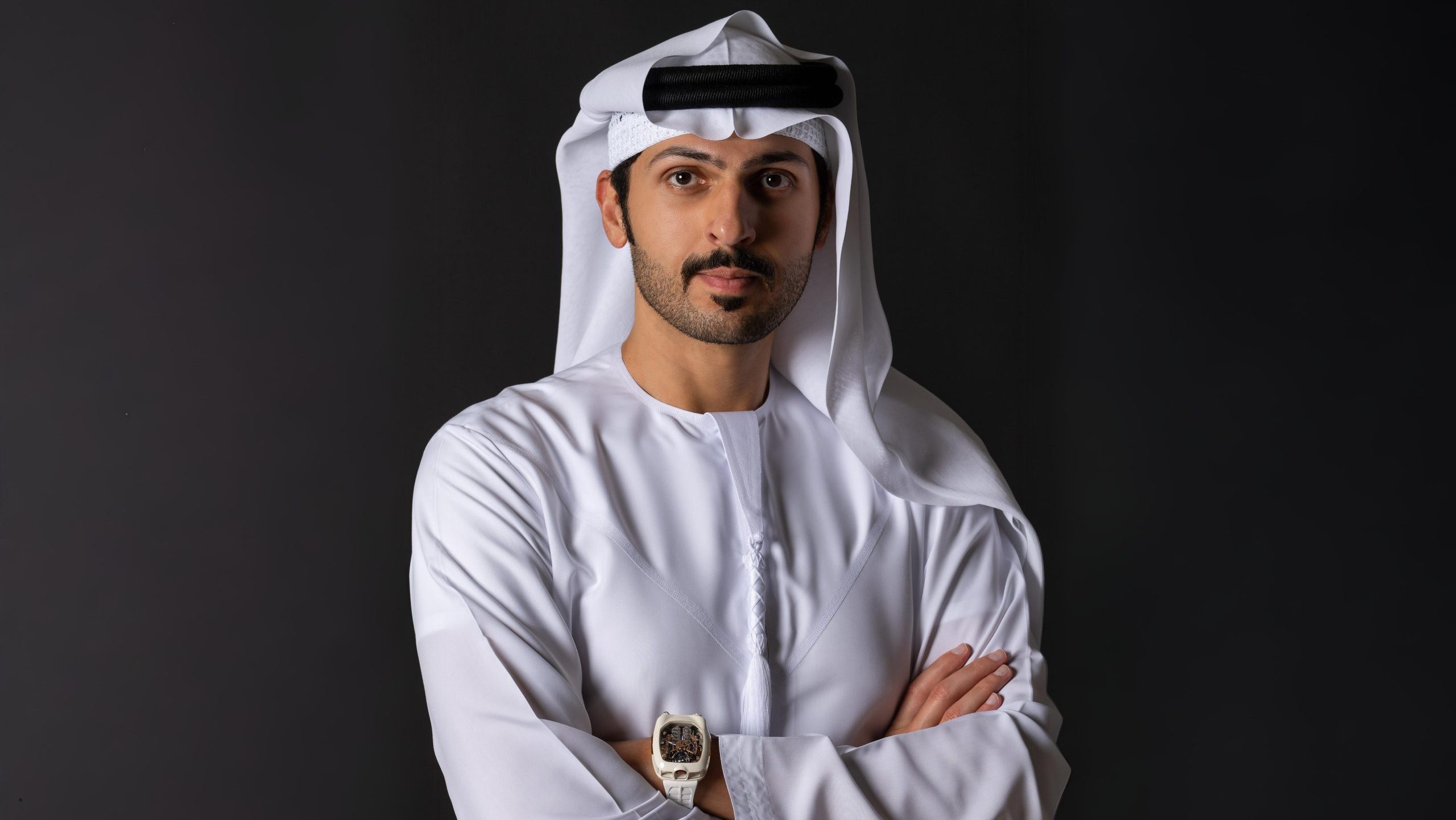Dubai is a city renowned for modernist architecture. Yet multiple award winner Binghatti Developers has somehow managed to stand out. We caught up with company chairman Muhammed Binghatti to discover what makes their buildings so unique.
The world-famous Dubai skyline boasts multiple headline-grabbing edifices. From the planet’s tallest structure, the Burj Khalifa, to spectacular designs like the Dubai Frame or the Museum of the Future, the city has long presented a gallery of architectural wonders. For would-be real estate developers, this both sets the tone and presents a challenge. In a metropolis where the extraordinary is ordinary, how do you make your mark?
Enter Binghatti Developers, founded in 2008, whose innovative approach has led to partnerships with luxury brands outside of real estate. Recent years have seen building designs inspired by high-performance / hyper luxury brand Bugatti and Mercedes Benz, as well as the luxury jewellery designer Jacob and Co. This has led to some truly spectacular results.
Binghatti chairman Muhammed Binghatti has guided the company’s course since 2014, having taken up the reins passed on by his father, Dr. Hussain Binghatti. As such, he has played a significant role in the company’s rise to prominence.
“While I am an entrepreneur,” the chairman explains, “I am also an architect. I have a degree in architecture, and every day I engage with design. I think this is very important actually, that we are a design-led company. That is what excites me and what I enjoy.”
Radical superiority
This ethos is what has enabled Binghatti Developers to forge ahead in what is perhaps one of the most competitive marketplaces in the world.
“To describe the Dubai real estate market as competitive is an understatement,” the chairman says. “But this competitiveness provided the incentive to come up with something new. That presented its own challenges. When you come up with something perceived as radical, not everyone is accepting of it.”
Chairman Muhammed Binghatti recalls when one of his first designs, which went on to become Binghatti Apartments, was derided in an early meeting.
“There’s no limit to perfection.”
“I laughed at the time,” he says. “And I told the individual that I respected their opinion but that I was convinced that if the design was taken to market, it would be a huge success, exactly because it was fresh and radical. Up to that point, all the innovative architecture had been in museums or maybe official buildings. So this stood out to me, and I wanted a design which went the extra mile, but in the residential sector. You could say that I wanted to approach real estate with an artistic mindset rather than simply a commercial one.”
Raising the bar
The chairman recalls how he also encountered initial resistance because of an increase in costs. His more flamboyant designs stirred interest and initiated debate but would be more expensive to construct than regular buildings. Despite all this, as soon as the first project was realised, results were instant.
“People would literally walk in off the street,” Binghatti Chairman recalls, “full of questions and enthusiasm. ‘What sort of building is this? Why does it look this way? Can I buy, can I rent?’ We had these kinds of interactions from the very first day. So, things really took off for us from there.”
In this way and under Muhammed Binghatti’s guidance, the company has been on a mission to redefine the property market of Dubai and ultimately, the world. It has done this through a series of flagship developments. Beginning with its first major development in 2014, things have really gathered pace in the last three years. The years 2022, 2023, and 2024 saw the development of the Burj Binghatti Jacob and Co Residences, the Bugatti Residences, and the Mercedes-Benz Places, respectively.
Unexpected inspiration
This progression has been achieved through a clear design DNA and an equally clear architectural language. In particular, the company sought inspiration from unusual sources. The chairman’s personal taste for supercars played a key role in this. When it came to these elite machines, he found both their designs and brand stories inspirational.
“The automotive and horology industries were particularly fascinating to us,” the Chairman states. “These are also very design-oriented industries, and if you look at certain car manufacturers or car brands, they have something that is unique to them. You can take any model of Mercedes and instantly know it is a Mercedes, for example, because there is a kind of fingerprint in the design. Ettore Bugatti famously said that ‘If it is comparable, it is no longer a Bugatti.’ So in a similar way, this is what we set out to do in real estate.”
“When you come up with something perceived as radical, not everyone is accepting of it.”
This approach has been enhanced by the company’s natural dynamism. Its youthful chairman is matched by a youthful workforce, something which has not happened by accident.
“We believe in the younger generation,” the Chairman explains. “We are deliberately a very young and dynamic company, and this gives us the ability to innovate in the way that we do. Anybody that searches for us online, who sees our marketing, our social media, immediately understands that Binghatti is a brand. We are not just another Dubai company making impressive buildings. There is an identity there.”
As far as the chairman is concerned, Binghatti’s impressive rise to prominence has been achieved through a series of phases. The first five years that the company operated are what he refers to as the ‘design era,’ during which the company’s distinctive architectural identity was established.
Smart home technology
Following the design era, the company’s next period zeroed in on technology and quality. With Binghatti’s architectural and design hallmarks recognised, the focus shifted to elevating the overall product experience. Innovations like voice recognition, which allowed lighting and air conditioning to be controlled remotely, became regular elements of Binghatti offerings during this phase. This was coupled with exacting attention to the quality of raw materials, meaning that all Binghatti apartment complexes and living spaces were constructed and fitted out to the highest possible standards.
This brought the company up to 2020, at which point, Muhammed Binghatti states that it entered a branding and growth era, which focused on taking the brand from the local market to the global. It was in this phase that partnerships with other elite brands were forged, during the realisation of the company’s most recent projects.
“For me, this was the ultimate strategic move,” Binghatti chairman says with a sense of pride. “These were the first buildings of their type in the world. This has taken our profile to a whole new level and triggered growth on several levels. So the innovative branding has brought with it a huge uptick in financial performance, too.”
With the company’s current portfolio valued just above AED 50 billion, it is clear that the chairman’s exuberance is firmly rooted in fact. Binghatti Developers recent upward trajectory has yielded not only eye-catching results but ones which reap rewards.
Stable relationships
Naturally, a huge part of Binghatti Developers success story is in the close relationships it has forged with suppliers, vendors, and contractors. While this holds true for leading firms in all sectors, it is of particular importance in construction.
“This is something which is really important to us,” the chairman reflects. “Some of our suppliers have worked with us for almost twenty years now. We’re very specific in the way we work with them. It’s a close relationship, and they understand our expectations. In turn, we create a formula which works for both parties and creates long-term growth for both. Central to that is the fact that quality is something on which we do not compromise.”
Binghatti Developers approach to quality is not restricted to its dealings with external suppliers. The company has its own internal quality department. The department oversees everything from electrical work, mechanical, plumbing, civil engineering, joinery, and finishing. Such is the emphasis placed on this department that its authority supersedes anyone else’s in the organisation.
“The only person the quality department answers to is me,” Binghatti chairman confirms. “From the first minute that a hole is drilled in a wall on site, our quality team is there. This ensures that the insistence on the very best materials and processes is something absolutely baked into our corporate DNA.”
Forging ahead
With this approach now well established, Binghatti Developers immediate future looks set to be as notable as its recent past. More than 16 projects have been launched in 2024, with 20,000 new residential units planned for the upcoming years in iconic locations such as Binghatti Hills, next to the famous Dubai Hills mall. Over the next five years, the aim is to double the portfolio while also looking beyond Dubai. International markets such as Riyadh, Turkey and London are very much on the agenda, both of which already have a Binghatti presence, with sales boutiques in exclusive locations.
With the Binghatti journey showing no sign of slowing down, the chairman is able to reflect on how far he has come, where he may still go and what it all means.
“There’s no limit to perfection,” he says simply. “I never consider my work to be finished. There is always a way to improve, a way to make things better. This is what drives me on.”
Click here to read and download the full article.





